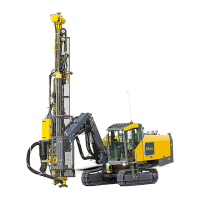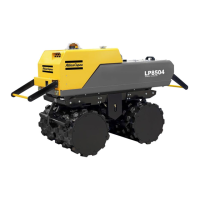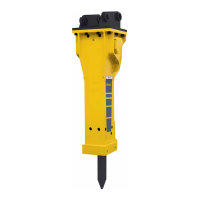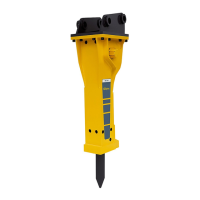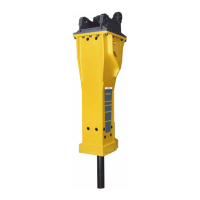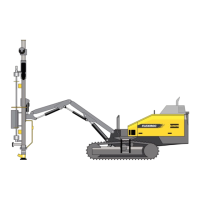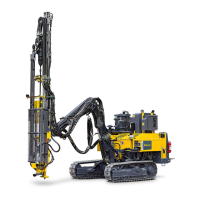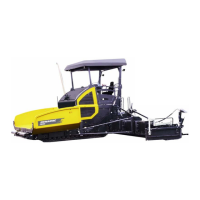SmartROC D65 T4F 2 General
12 No: 713944459.6 en
7 Emissions cleaning unit
8 Electric cabinet
9 Feeder
10 Emergency stop
11 Compressor
12 Hydraulic systems
13 Air system
14 Boom
15 Dust collector DCT
2.4.2 Wagon frame with track frames
The diesel engine, chassis, dust collector, hydraulic system, air system and boom system
are mounted on the wagon frame.
The wagon frame comprises a frame with the operator's cabin/platform mounted on the
left. Controls for tramming and drilling are installed in the operator's cabin/platform.
The track frames are carried on journals in the wagon frame. When tramming on uneven
ground the drill rig is balanced by means of two compensating cylinders.
Each track frame has its own service brake. The brakes are operated by two separate con-
trol systems.
The bodywork covers the diesel engine, the compressor, the various lubrication tanks, the
valves and the hydraulic hoses. Inspection covers allow easy access to the various ma-
chine components. The covers are secured in the open position by means of gas springs.
The dust collector is mounted at the back of the rig on the right-hand side.
2.4.3 Power pack
This hydraulic drill rig is powered by a turbocharged, water-cooled diesel engine.
The diesel engine is equipped with a monitoring system that includes automatic shut-down
functions.
The drill rig is driven by two traction motors with gears. The traction motors with gears are
mounted in the track frames.
The hydraulic pumps and the compressor are driven by a diesel engine.
2.4.4 Exhaust filtering (Tier 4 Final)
Regeneration is a process that burns the soot from the diesel engine's particle filter, which
cleans the exhaust emissions. In most cases regeneration is started completely automatic-
ally and without affecting the rig's performance. Regeneration can be run in two different
modes depending on the speed of the diesel engine and calculated soot level in the
particle filter.
In addition to the particulate filter, this rig is equipped with a system that injects DEF
(Diesel Exhaust Fluid) into the machine's exhaust system. By means of a chemical reac-
tion, this fluid dramatically reduces the amount of harmful nitrogen oxides (NOx gases) the
rig releases into the atmosphere.

